Archive for ‘General’ Category
Germs, Gladys Kravitz & Productivity: Why “Clean Off Your Desk Day” Isn’t Enough
As I write this post, a thick blanket of snow has covered, and somewhat paralyzed, my geographic region. There are only so many snowpeople one can make, so many times one can read the same school closings scrolling across the screen, before a bit of cabin fever starts to set in. All day, I’ve been pleased to read tweets and updates in observance of Clean Off Your Desk Day.
This holiday was started by Anne Chase Moeller, daughter of the author of Chase’s Calendar of Events, who found her father’s desk to be overwhelmingly cluttered. Mr. Chase is certainly not the first to find himself in such a predicament, and if he dealt with his desk the way most people do, he probably didn’t take much time out to worry. Indeed, clutter’s insidious creep doesn’t necessarily worry cubicle-dwellers and desk doyennes until something goes missing.
But a disorganized desk is problematic even if you can find everything you need, and you almost certainly can’t find it as quickly as you’d like. A disorganized desk can be dangerous to one’s physical and mental health, productivity, relationships and more.
Frequent readers of Paper Doll know I believe organizing is not just about the aesthetics of keeping things tidy–it’s about improving function. A clean, organized desk preserves at least five basic life and work essentials:
HEALTH
Sensitive readers may wish to avert their eyes from these next paragraphs. According to a study by University of Arizona environmental microbiologist Dr. Charles Gerba, co-author of The Germ Freak’s Guide to Outwitting Colds and Flu,
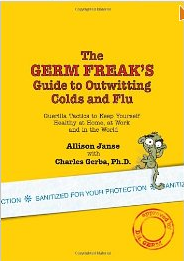
a typical desk may harbor up to ten million bacteria. For comparison, that’s 400 times the amount found on the average toilet seat. Yikes. (Paper Doll imagines that some readers may choose to avoid stranger’s desks and powder rooms after that little statistic.)
Telephones are the worst culprits, with over 25,000 germs in an average square inch of space, and the contamination on desktops (likely a result of all those lunches and mini-meals at the desk) clocks in at 20,197 germs per square inch. And lest you think that you’re safe if your laptop is your desk, keyboards can sport about 3300 germs/square inch.
The solution? Set up a card table, rolling cart or even a sheet on the floor and move everything you can remove from your desk. (If you move the computer, be sure to turn it off and unplug it, first.) Use disinfecting wipes to clean your desktop, telephone, keyboard, mouse, electronic gadgets, printer keypad, stapler and all of the doodads you use at your desk. Check your computer’s manual regarding preferred techniques for cleaning and de-germifying the monitor and computer, itself.
Evicting germs shouldn’t be saved for an annual Clean Off Your Desk Day or even Get Organized Month. To keep microbes at bay, aim to deep-clean your desk weekly, and take time to de-germ after eating at your desk or letting someone else use your phone.
SANITY
Clutter is distracting, and distractions are unnerving. It’s already hard enough to pay bills, sign permission slips or plan business tasks with the environmental clutter of phone calls and interruptions deterring your focus. Tangible clutter on and around your desk, whether comprised of magazines and recipes or expense reports and resumes, too easily hides your work priorities under sedimentary rock-like layers while sending out a siren call, forcing you to cast your glance on low-priority attention-stealers.
Every time you test three pens before you find one that does have ink and doesn’t leave blobs all across the page, your patience wears just a little thinner. Each time you must flip through every sticky note pasted to your monitor or floating around your desk to find a password so you can meet a deadline, your blood pressure increases incrementally.
To overcome overwhelm, read If You’re Drowning In Paper Build A Raft and then set alarms to remind you to periodically:
- File away stray information (digitally, or in your tickler file or filing cabinet)
- Clean your desk and put away projects you’ve completed
- Digitize as much of your loose paper information as possible
Of course, avoiding distractions that make you kooky isn’t the only way to keep your desk time cheery. Invest in accessories that brighten your mood to incline you to stick with your organizing rituals. Whether you’re into neon file folders  from Smead, pastels hanging folders
from Smead, pastels hanging folders 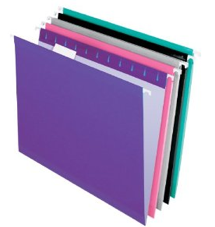 from Pendaflex, bulletin boards
from Pendaflex, bulletin boards 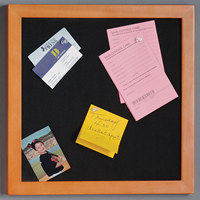 for true vertical organization or See Jane Work‘s magazine boxes
for true vertical organization or See Jane Work‘s magazine boxes  , pick desk accessories that excite or delight you.
, pick desk accessories that excite or delight you.
FUNCTIONALITY
An organized desk helps you save time and money, allowing you to focus on the essential tasks at hand. With reference papers in labeled files (instead of toppling piles) and action items awaiting your attention in a tickler file, you can concentrate on your priorities. 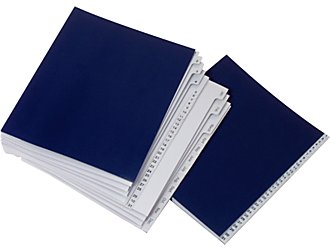
When you organize your desk, bear in mind two categories:
1) What do you have on your desk that you don’t need or want?
Look around your desk right now. Are non-essentials crowding you out of your space? Are there books you intend to read but which have lain untouched for over a week? A month? Consider moving the books to a shelf and making a block in your calendar to read for 20 minutes prior to having lunch each day. A regular time helps you fit reading into your schedule and keeps your aspirational material off the desk. Similarly, put action files away until the work time you’ve schedule actually arrives.
How many pens and pencils do you have? Is your mug filled with pencils you never use (either because they’re stubby and dull or you’re just not a pencil pusher–I mean, user)? Are there thirty pens in various colors and thicknesses, but you only use a Sharpie fine pen in black or a blue Pentel Energel? Donate cheapie pens every time you visit a waiting room or locale where pens seem to go missing.
Do you have a pile of phone books or an overflowing Rolodex you never consult because all of your contacts are programmed into your phone or computer? Away with them!
2) What might you want on your desk that you don’t actually have?
- Do you get up from your desk frequently to find information? Get a bright three-ring binder and fill sheet protectors with essential info like emergency contacts or the configuration data for your wireless router. Perhaps you’d benefit from a printed cheat sheet for making those “funny” symbols for letters to your international clients and emoji to your friends. (Do you do international commerce? Make sure you know your $ from your €.)
- “Don’t put things down; put them away!” This is especially apt in the small, sometimes cramped confines of your desk. Define specific homes for reference and research files in railed filing drawers/cabinets or shelved binders.
- Store action items and office supplies based on my Rule of Proximity & Utility. The more often you use something (or should be using it), the closer it should be to you in the Prime Real Estate of your desk. You don’t, however, need a stack of fifteen Post-It pads on the surface of your desk. Your office supplies are better stored in a distant drawer or cabinet where you can go “shopping” once a week or as needed.
SECURITY
Once you’ve gotten the supplies and gadgets back to your desk or tucked away and the files (more or less) sorted into their action, reference or archived categories, really scrutinize the teeny pieces of paper that adorn your cubicle walls and the other horizontal and vertical surfaces.
How long have those Post-Its bearing passwords been affixed to the monitor for all (from coworkers to cleaning staff) to see? Who else wanders by your office? Customers, vendors, consultants? Friends and family of other employees, maintenance staff and colleagues? Gladys Kravitz? 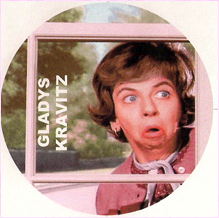
Even in a home office, where only the UPS guy, babysitter and pizza delivery lady see your desk, it’s crucial to protect sensitive data from disclosure—whether that’s your Social Security number and bank data, clients’ proprietary information or personnel files.
The more clutter in your desktop environment, the harder it is to know when something is missing or if prying eyes have settled on them, so:
–Change your passwords, and then do it again frequently. (Alert your spouse/partner at home, and if necessary, clear the changes with your supervisor or IT department at work.)
–Transfer your passwords to a digital password management system like 1Password or LastPass or at least a paper system like Internet Password Organizer.
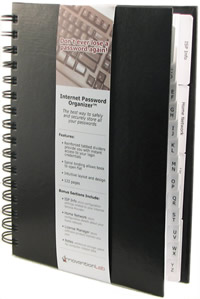
Get out of the habit of posting sensitive information on your walls and the periphery of your computer screen! It’s tempting, but is only convenient until the first time you suffer a digital break-in. Instead:
- Lock sensitive papers and computer backups in fire-safe drawers or filing cabinets
- Secure laptops with security cables and desktop computers with passwords (and firewalls).
- Destroy any sensitive data you no longer need. Think of yourself as a spy like James Bond or Mission Impossible’s Jim Phelps. Just don’t feel that you have to “eat” your words or arrange for items to self-destruct. Shredding should suffice.
REPUTATION
At work, do clients and colleagues sometimes seem reluctant to leave files or important documents with you? Are family members dubious about giving you permission slips to sign or checks to deposit? The problem may be your desk.
Whether or not the impression is accurate, people often assume a cluttered desk represents a cluttered mind. While it’s important to be physically and mentally healthy and improve functional productivity and security, preserving your reputation by keeping your desk clear of clutter and your essentials accessible will help you achieve your goals.
It’s not just cleanliness and functional tidiness that impacts the judgment of others. A University of Michigan study found that too many personal items on your desk can adversely affect your professional image. If more than one in five items on your desk are personal, like photos, toys and stuffed animals, banners, or goofy mugs, those in authority (or in a position to report to authority) might doubt your commitment or work ethic.
And let’s face it, even if your desk is in a home office and there’s no promotion beyond Chief Cook and Bottle Washer, Vice President for Financial Affairs and Co-Chair of Family Strategizing, do you need sub-conscious distraction and lost space due to “desk trinkets” that you probably no longer use or even actually notice?
![]()
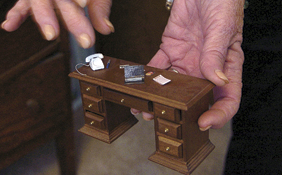
Finally, once you’ve cleaned and organized your desk, reward yourself with a Tiny Desk Concert. Paper Doll‘s favorites? Hey, Marseilles, Nick Lowe and Weird Al Yankovic. But check the archive for the likes of Tom Jones, Vic Chestnut, Mavis Staples, the Australian Chamber Orchestra and more. These Tiny Desk Concerts may become the desk “accessories” you didn’t even know you needed.
Paper Doll Jump Starts Your Year: Fast Tips For Gaining Organizing Mojo
Getting organized always tops the list of New Year’s resolutions. However, between the pervading sense of overwhelm that keeps people from getting (and staying) organized in the first place and the back-to-the-real-world work and family obligations after the holidays are over, it’s easy to feel defeated before the year has really even gotten started.
Today’s post is chock-full of fast tips for making inroads on paper and related clutter. Some assignments take as few as five or ten minutes, and none should take more than an hour. Set aside a few minutes each day when your mental energy is high to tackle these tasks, and by the middle of Get Organized Month, you’ll be well on your way to a more productive, organized 2011.
1) Box Up the Holidays
Packing away decorations isn’t difficult, but it generally lacks the excitement of bringing out the sparkly stuff. It doesn’t have to be that way. If you’re not all partied-out, consider having an Un-Trimming party, even if it’s just a party of one. Play decidedly non-holiday music or pull up one of the top song countdown podcasts to get you in a holiday-removal mood. Label storage boxes (remember the NackIt labels we reviewed here?),
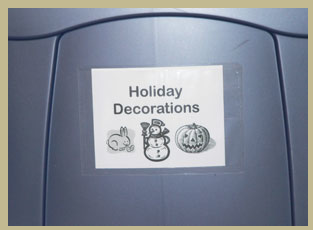
toss or recycle broken lights and decorations, and put away the holidays until next year. As you go through, take notes on any replacements you need to buy or changes you need to make for next year, and tuck your plans in the November slot of your tickler file.
Don’t forget about greeting cards! This classic Paper Doll post, Hallmark Holidays and American Greetings: Card Clutter, will help you make the necessary decisions regarding which cards to recycle and which to preserve. And for those you might want to give high priority, recall Card Memories’ Greeting Card Keeper Album we reviewed last spring.
2) Get a Head Start on Tax Time
Call your pharmacy and request a printout of your prescription purchases for the previous year. This will give you a jump start on calculating whether you can deduct medical expenses when you do your taxes. You should be able to get your own printout and that of your children, but your spouse may have to request his/her own.
When you pick up the prescription purchase forms, just drop them in your tax prep folder. No tax prep folder, you say? That’s easily fixed. Create your tax prep folder(s) for 2010 so that as soon as 1099s, W-2s and other tax forms start arriving in mid-to-late January, you’ll have someplace to put them. Alternatively, use one of the Smead Tax Organizers we’ve reviewed previously.
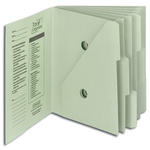
Take a peek at last year’s tax return (you know where it is, don’t you?) to make a list of the items you should be expecting. If you’ve newly acquired taxable assets, like stocks, add those to the list. These notes will help you figure out if any W-2s, 1099s or 1098s are missing. For more on what these forms represent, review the classic Paper Doll post on the Taxing Treasure Hunt.
3) Be A Time Traveler
Past: A little over a year ago, in One Last Flip Through The Calendar, we examined how reviewing the lessons of the past could help make for a stellar future. Pop back in time to that post so you can revisit the lessons of 2010 — the successes, surprises, opportunities, recurring events and missed connections — and put them to good use in building 2011.
Future: It’s impossible to organize your time without having a system for planning all of your obligations (and desired activities) and figuring out when you’re going to get around to them. If you haven’t figured out what kind of planner (paper or digital) would rock your world (eliminating chaos and giving you back control), and your visions were more of sugar plums than calendars last week, be sure to catch up with Paper Doll Pencils You In On Her Calendar: 6 Tips for Planning 2011.
4) Give The Floozies Their Marching Orders
Ordinarily, Paper Doll avoids floozies (loose, homeless paper scraps). But after I did a blog post on Post-It Notes a few months back, for which I acquired a small package of the sticky notes, I succumbed to the same dastardly habit I warned against. I avoided using them for phone messages and notes on conversations, but grabbed them to capture my momentarily-brilliant ideas.
Over New Year’s weekend, however, I determined that enough was, indeed, enough, and collected every bit of rainbow riff-raff and sorted them into categories: ideas for Paper Doll blog posts, references for Best Results for Busy People newsletter articles, notions for ebooks, video submission topics for my NAPO chapter’s Get Organized Month YouTube channel, etc.
They weren’t all creative ideas. Some were reminders of things I wanted to learn, with helpful “tips” to myself as to where to go. For technology issues, I was reminding myself to talk to Brandie Kajino, Biana Babinsky and Gina Schreck to learn more about everything from the newest Google apps to social media marketing to Cinch.
The sticky notes reminded me I wanted to know how to format an ebook for Amazon’s Kindle and how to upgrade my newsletter to a snazzy new HTML format. And, of course, some of those floozies contained information that had to be recorded elsewhere, digitally or on pager.
Once I determined my broad categories, I turned my office door into a 3D spreadsheet of floozies, with one column for every category. Once done, it was easy to transcribe these categories into the appropriate planning pages of my master legal pad and send them to live in my tickler file, awaiting further action. Alternatively, you could capture the ideas in an actual spreadsheet or on Evernote and link the actions to your digital task reminders. Either way, clearing the desk will clear the decks for a new year.
Remember those nice postal carriers whom you greeted cheerfully last month when they brought you packages? I know, you’re tempted to greet them with grimaces as they deliver those holiday bills. But don’t put off opening those envelopes. Even if you overindulged at the holiday checkout counters the way so many of us indulged at the holiday buffet tables, not opening the envelopes is like not getting on the scale. It doesn’t change the truth of the situation.
Worse, it’s like suspecting you might be ill, but not going to the doctor to get a diagnosis. Until you know how serious the problem is, you can’t begin to prescribe a solution.
Open your year-end investment and retirement statements when they arrive—don’t just pile them up or tuck them away. If you’ve been averting your eyes all year, you may be pleasantly surprised by some rebounding. More importantly, you may find that your stock/bond balances are seriously out of whack from what you originally designated. Embarrassed that you don’t know how to re-balance your portfolio? Pick up the phone and call the 800 number on your statement. You won’t be the first (or the last) to ask for help getting the ratios back in order, and the process is painless.
6) Master the System
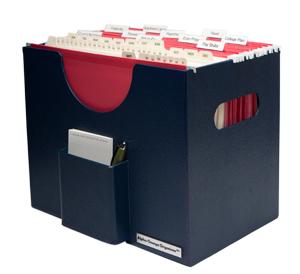
Once you’ve paid your bills and reviewed your investment statements, don’t just toss them aside — file away those you’ll need for future reference. If part of your paper clutter struggles have come from not having a system at all, revisit the original Paper Doll Family Filing series:
Family Filing—As easy as (eating) pie
Financial Filing—Scrapbooking snapshots of your money’s life
Mom, why is there a receipt stuffed in the turkey?
I Fought the Law…and the Paperwork Won!
Patient: “Doctor, it hurts when I do this.” Doctor: “Then don’t do that!”
Paper Dolls Live In Paper Households
I Hope Nobody Ever Writes a Nasty Tell-All Called “Paper Doll Dearest”!
I know I can be a bit of a broken record about this, but one of the best ways to combat identity theft and keep your financial life on the straight and narrow is to scrupulously check your credit reports. If you haven’t done it lately, take a few minutes to go to AnnualCreditReport.com (and not to the competitor with the cute commercial jingle).
If you’re not sure about all the hubbub over credit reports and all those other personal reports, it’s time to revisit the Who Knows Your Secrets? series:
Who Knows Your Secrets? Part 1: From Little Sister to Big Brother
Who Knows Your Secrets? Part 2: Check Up On Your Checking History
Who Knows Your Secrets? Part 3: Get a CLUE About Insurance Reports
Who Knows Your Secrets? Part 4: Someone’s Snooping In Your Medicine Cabinet
Who Knows Your Secrets? Part 5: Employers & Landlords & Yentas, Oh My!
Who Knows Your Secrets? Part 6: Many Happy Returns
8) Be Grateful (Even When Thanksgiving is 11 Months Away)
It’s January. Write the darn thank-you notes already! The mental energy wasted on knowing you have to do it and procrastinating anyway keeps you from accomplishing so many of your other goals.
Grab your stationery or a box of note cards, your address book, and a roll of stamps. Take a deep breath and jump in: let the person know you got the gift, how you’re going to use it, how much you appreciate it, and then mail it off. It takes five minutes (at most) to write a thank-you note; don’t let your desk or kitchen table stay piled high with reminders throughout January when you can just do it and be done.
Having trouble finding your stationery and note cards? This is the perfect opportunity to take note of what you need to acquire and organize your stationery wardrobe accordingly.
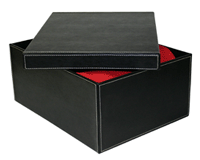
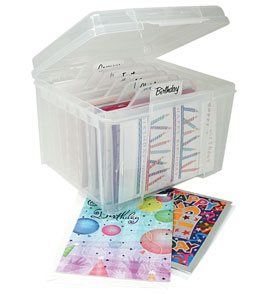
Paper Manners Matter: Cut Card Clutter and Store Social Stationery has everything you need to get your writing system up to snuff. (Fountain pen not included.)
Paper Doll knows how the first week of a new year can seem like a splash of cold water after the relative coziness of the holiday week, but the best way to warm up to a new calendar year is by easing yourself into organizing mode. Tackle one of these tasks or projects every day or so in the new year, and you’ll be feeling more organized in no time!
Paper Doll Pencils You In On Her Calendar: 6 Tips for Planning 2011
~Sren Kierkegaard
In the spirit of this quote, let’s tie up last year with a ribbon and prepare to open the gift of the coming year. Nothing helps us understand the past and stride into the future better than a well organized schedule-planning system. To that end, I offer six strategies for planning 2011:
1) Know Your Planning Personality
In days gone by, a free calendar from the bank or the butcher might have sufficed. No more. Now, the varieties and types of calendars are endless — digital or paper, ring-bound or spiral, sizes from compact to legal, hourly or by daypart, daily or weekly. It’s no wonder people tend to change systems each year, or sometimes abandon systems altogether.
Clients sometimes ask me whether they are hopelessly out of date using paper calendars instead of Blackberry, iPhone or other smartphone apps synced to their PCs. The truth is, high tech isn’t for everyone, and even those of us who practically live at the keyboard don’t always find digital calendars to be the most satisfying format.
The type of calendar system you use is far less important than your level of commitment to whatever system you pick. If you don’t currently have a system that works for you, it’s worth giving some thought to how you tend to keep track of things.
- Do you tend to be a linear thinker?
- Do you know the tricks to make your DVR record all your favorite shows?
- Do you enjoy reading gadget manuals? (Are you at least willing to do so?)
- Are you far more likely to log into Remember the Milk to track your tasks and shopping lists than to scribble notes on paper?
- Will you remember to sync and back-up every single day, and keep your gadget charged and close at hand? (Be honest!)
If this sounds like you, a digital calendar may be your personal scheduling GPS! Explore Google Calendar, Apple’s iCal, and MS Outlook’s calendar. Then, research reviews for the best calendar and productivity apps for your particular flavor of smartphone and verify how well they sync with your favorite calendar.
- Do you tend to remember landmarks rather than directions?
- Do you consider yourself a tactile person, remembering clothing, books, etc. at least in part by the way they feel to the touch?
- Do you color-code your appointments and obligations by life category or family member?
- Do your creative juices flow more easily when you write, rather than type, your ideas?
- Does the thought of using one more beeping device give you a headache?
If this sounds like you, paper calendaring may be your best bet.
Sometimes it seems that there are as many paper planner styles as people. Paper Doll remains loyal to the Franklin Covey classic-size daily calendar pages, though I bemoan the loss of their New Yorker cartoon-themed pages and have yet to find the mix of practicality and levity that they delivered. If you prefer the tried and true, At-A-Glance, offers clean lines and the ultimate in simplicity, as does the colorful 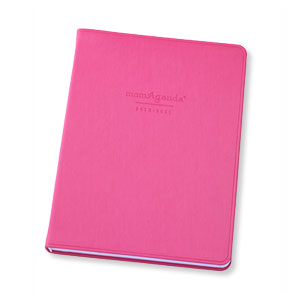 MomAgenda. Lesser known outside the professional organizing field is the much-respected Planner Pad funnel system.
MomAgenda. Lesser known outside the professional organizing field is the much-respected Planner Pad funnel system.
If you’re up for something novel and you tend to have a lot of recurring appointments, give a peek to the innovative, self-copying “Only Write It Once” WeekDate system:
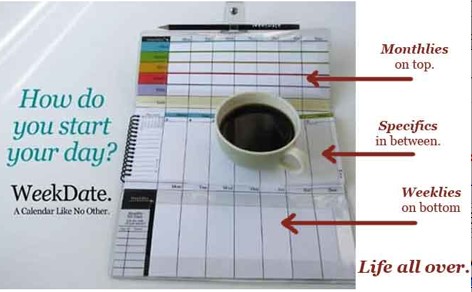
If you usually doctor your calendar with doodles and sticky notes, consider the Bubble Planner, designed for those who love the mind-map experience.
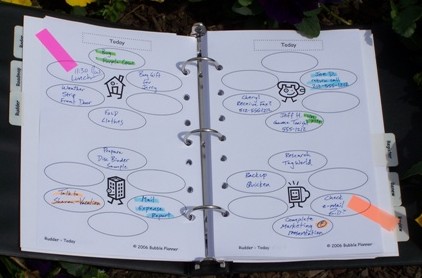
2) Begin With The Basics
Whatever calendar system you choose, whether digital or paper, there are certain essential characteristics:
–Pick a calendar that lets you see a month at a glance as well as the daily view.
We tend to compartmentalize and think about what we have to accomplish on Tuesday the 11th, but might not take into account a late meeting the Monday night prior or leaving for a trip early the next morning, on Wednesday. Seeing the entire month gives us the chance to judge the ebb and flow of our work schedule, make sure we create pockets of preparation before any influx of insanity.
–Select a planner that has enough space for you to write. For digital calendars, it’s important to have a system that won’t limit the number of characters as if you were tweeting your daily schedule to yourself. Only you know whether seeing merely a keyword, linked to a larger text box, will suffice. For those of us with sprawling, not-so-neat penmanship, a pocket-sized paper planner may cramp one’s style, literally and figuratively.
—Use one planner for both your business and personal appointments. If you keep one calendar for doctors’ appointments and kids’ schedules, and another for work, you’ll never know if your child’s recital conflicts with a major client presentation, or if you’ve scheduled yourself to attend a convention the week your children have parent-teacher conferences.
—Take your planner everywhere. This isn’t usually a problem with digital divas, but if you’re only in the habit of carrying your paper planner to work functions, rethink the style and size of what you use so that you’re comfortable taking it everywhere (and remembering to bring it home with you).
3) Commit To The Process
Having a great calendaring system is like having Jeeves as your butler. If you pay Jeeves poorly (i.e., use a cheap or kluged system) or don’t feed Jeeves (i.e., forsake updating with all appointments), your neglect will yield one insolent, neglectful butler (or a calendar of conflicts, illegible notes and missing appointments).
Picking a planning system that matches your personality and covers the essentials is a great start, but success depends on your behavior as much as the utility of the planner. If you’re the type who forgets to check your calendar, whether for entering data or attending appointments, these technology and accountability tips can help:
- Set an alarm on your cell phone to ring at the end of every day, around 5 p.m., to remind you to check your calendar for the next day and/or the coming week.
- If you have an assistant at the office (or a virtual assistant), schedule a time each day to meet and review newly-added appointments and obligations, as well as the next day’s agenda.
- Ask loved ones to prompt you by asking, “What’s on your schedule for tomorrow?” at dinnertime.
- Block family time on Sunday nights to jointly review the coming week. Make sure you’ve cordoned off time for anything important to them, individually, or for the family as a whole.
- Schedule your next appointment before leaving anyplace you visit intermittently (doctor, dentist, massage therapist, hair or nail salon, etc.) — but only if you have your calendar with you. If you aren’t traveling with your calendar, ask them to call you the next day (at a time you know you will be available) to set up your next appointment.
4) Get a Head Start on 2011
Financial advisors say that you have to pay yourself first or you’ll always find ways to spend all your money before you’ve saved a penny. Similarly, you have to schedule your life-saving, sanity-saving times to preserve your mental and physical strength. Once you have your new planning system in place:
–Review this past year’s calendar, month by month, and copy all the recurring information (birthdays, monthly meetings and conference calls, convention dates, etc.)
–For business, check the web sites for your Chamber of Commerce and networking groups and find out when the local business expos and trade shows will be scheduled and block time on your calendar to attend. For your personal life, review your favorite sites’ events pages to know when there will be special events associated with parenting and home-school groups, community associations and your house of worship.
—Schedule time for a healthy body. Grab the phone and make appointments for the coming year for yourself and for your family. Remember the doctor, dentist, orthodontist, and eye doctor, and plan out the most convenient times to have inconvenient tests like mammograms and colonoscopies. With everyone’s whole schedules open, this is a perfect time to take control of your life, so schedule your massages, fitness training sessions and chiropractic or acupuncture appointments, too.
—Follow the money. Just as you should make time to create a healthy body, take steps now to build healthier finances. Schedule appointments with your CPA for early-to-mid February, by which time you should already have all your 1099s, W-2s, and whatever other paperwork you need. Think about who else should have a few calm, pre-planned moments of your time. A financial planner? Your bookkeeper? Your insurance salesperson? Slot those appointments now, before they get booked up.
–Review last year’s appointments to see with whom you met, and brainstorm names of those you’d really like to meet. If you have a target goal for next year, like finding a new job or getting in shape, your calendar can be a vital asset. Pick a day of the week to focus on specific activities; for example, you can try to set up informational interviews on Wednesday afternoons or set aside time now, before things get crazy, to pair up with a friend to take a yoga or cardio class on Friday evenings (instead of going out for fattening dinners).
5) Build Administrative Time Into Your Schedule
Whether you’re a stay-at-home parent or a business executive or a tearing-your-hair-out hyphenate, your schedule has to reflect time to plan what you do as much as it reflects the actual things you do.
For example, I schedule no client sessions on Mondays, so that I know I will always have one day per week for marketing, attending to finances and handling other administrivia. It also makes Sunday nights stress-free, as I know the only grumpy meanie I’ll be facing on Monday morning…is myself!
6) Time Travel
Just as you’ve created space in your schedule for everything you’ll be doing, create fresh spaces in your office to handle the upcoming activities:
Purge last year’s folders (and tickler file, desktop, drawers and other flat surfaces) of papers that are no longer needed for work, tax or reference.
Create folders for your 2011 expenses and 2011 tax prep for personal and business needs. (Of course, if you haven’t started gathering your 2010 paperwork, this is the prime time to do it.)
Develop files for conferences you’ll attend, giving the registration and travel information somewhere safe to live. File them away until they’re needed, but put a note in the appropriate month’s tickler slot or calendar page to remind you where you’ve sequestered them. (It’s time travel; talk to your future self!)
A feng shui expert recommends putting ten new, blank manila folders at the front of your customer or client files. I think it’s some sort of “If you build it, they will come” ritual. Like chicken soup, “It couldn’t hurt!”
Good luck getting your calendar in gear so you can plan a wonderful 2011. Happy New Year!
Three Book Reviews, A Contest and Why Paper Doll Is As Green As The Grinch
Everybody loves a good book, and a good organizing book is worth a hundred times its weight in the clutter it inspires you to toss. However, it’s probably not the best choice as a holiday gift. No matter how well intentioned you might be, your recipient (unless he or she is a professional organizer), is likely to take as kindly to a book about organizing (and the implication that he or she needs to get organized) as one might be about a gift certificate for a gym, Weight Watchers or a teeth whitening service.
However, chances are good that you’ll receive some holiday goodies (cash or gift cards) that will give you flexibility to give yourself the gift of good reading. Thus, today’s post offers up three organizing books Paper Doll read and loved this year. (Suffice it to say, there are many other wonderful organizing books out there, and absence from this post implies absolutely nothing about the appeal, quality and value of any other books on organizing by my colleagues and other esteemed writers.)
First, up is Erin Doland’s Unclutter Your Life in One Week: A 7 Day Plan to Organize Your Home, Your Office and Your Life!
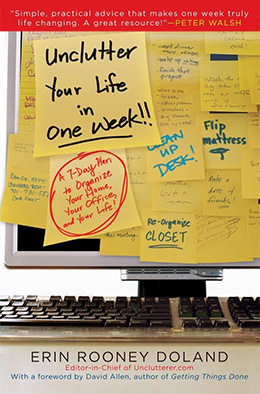
I’d like to hate Erin Doland. It would be easy to do. She’s everything that might inspire Grinchy, green-faced envy. She’s got a ridiculously successful organizing blog, Unclutterer, that has a loyal following. She’s quoted in national magazines and newspapers and interviewed on television. She’s got a column on RealSimple.com.
And, as if that weren’t enough, she’s a charming, wickedly funny person in real life.
Couldn’t you just hate her for that?
But Doland is also very real and down to earth, as evidence by her bestseller. From “Erin’s Story”, the prologue to Unclutter Your Life in One Week, the reader sees this is not your usual book about organizing. Doland admits to a scandalous past as someone who (eeek!) had real clutter issues. She confesses:
Doland’s tale of anxiety and chaos is brief but compelling. She builds a confidence with the reader that extends throughout the book. She, too, felt overwhelmed and powerless, but eventually figured out the solutions necessary so that she and her family could live what she calls “a remarkable life” — and then she shares the keys with her readers.
The practical yet funny book covers everything from creating effective laundry systems to organizing work presentations with equal aplomb. The days of the week are divided logically, with three elements of each “day”, one aspect of work life sandwiched between two areas of challenge in the home/personal area. Doland’s style is prescriptivist, but not pedantic. She lays out a simple, straightforward framework for how to achieve a goal (like decluttering the bedroom or developing e-mail strategies), but recognizes the depth and breadth of diversification in readers’ lives and offers themes and variations.
Doland understands what readers need in an organizing book — rules that explain and solve without turning you into an automaton. Unclutter offers up guidance and instruction with a lively soundtrack. References to pop culture blend seamlessly: The Flintstones (file nomenclature) and Star Trek (optimizing the number of household towels) share space with Reese’s Peanut Butter Cups and “Groove is in the Heart” (a musical cue for achieving a decluttering mood).
In general, this is a book on streamlining — knowing how to purge the unnecessary and systematize what’s kept. It’s not, in general, a book heavy on the psychology behind how the clutter has come to be or a guide for the chronically disorganized or hoarders. (There are other books for that.) This is primarily a book for those who are situationally disorganized and though motivated, find themselves perplexed when it comes to creating a game plan.
Doland is not unmindful of the emotional pull of nesting in clutter, however. My favorite quote from the book, one which I find myself quoting often, is, “It’s important to remember the past, but an Unclutterer chooses not to live in it. Literally.”
Unclutter Your Life In One Week is due out in paperback (with a new cover) on December 28, 2010.
Our next book is Pretty Neat: The Buttoned Up Way to Get Organized And Let Go Of Perfection, by Alicia Rockmore and Sarah Welch, co-founders of Buttoned Up.
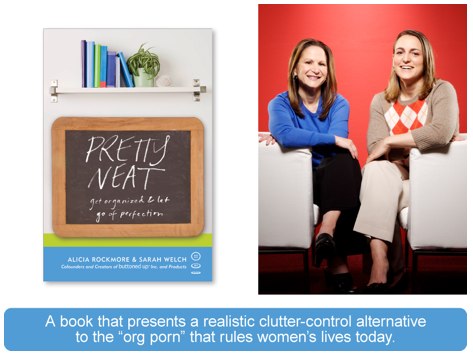
And if Doland’s book is one person’s approach to helping you achieve your “remarkable life” by getting past the clutter, the Buttoned Up gals have, through multitudes of interviews with “real” women, set the bar not just at organizing, but at restructuring attitudes towards yourself and the clutter that surrounds you.
From the get-go, Welch and Rockmore set their approach aside from the glossy fantasy of what they call “org porn”. In their introduction, they state:
They battle overwhelm, or “organizational inertia”, by refocusing on realistic standards, changing expectations and motivating readers to define their own organizational agendas. As the authors share conversations and tips, you can picture the them sitting with you at a table in a cafe, leaning in and saying “Oh, no, they DIDN’T!” when you divulge your own experiences with judgmental visitors, bursting closets or non-participating spouses or kids.
Each chapter, whether it tackles delegation, prioritizing, to-do lists, workspace clutter, email, meal-planning or household and toy clutter, shares the following elements:
-Motivational quotes that offer little extra kicks of inspiration
-Interviews with everyday women about how they “embraced their imperfection” and the skills they employ to handle the challenges that try to obstruct their progress
-Advice based on research and practice by Welch and Rockmore, as well as the sampled wisdom of various interviewees, to conquer the unavoidable tasks and get to the sweet spot in life.
-Pretty Neat Tips sidebars with gems of solutions ranging from RSS feeds to organizing a toy swap
While the messages of Pretty Neat are applicable to everyone, the target audience is assuredly the busy moms and professional women out there who are struggling with the demands of home and work, and frustrated by society’s images of aspirational perfection that don’t reflect modern life. The authors even organized chapters into smaller, bite-sized pieces, as they know that there’s no time to read a chapter in one sitting, so each practical (and sometimes revelatory) morsel can be consumed while in the carpool lane or waiting for a teleconference to begin.
The authors found that 80% of women reported feeling organizationally challenged but were nonetheless able to offer their life-tested strategies for everything from getting out the door in the morning to getting kids to take responsibility for their belongings. The Buttoned Up YouTube channel boasts more than one hundred interviewee-submitted tips on everything from taming the mail pile to organizing business cards.
In full disclosure, I might not have gotten around to reading, let alone reviewing, Pretty Neat had the Buttoned Up ladies not forwarded a review copy and sponsored a great contest of which you can be a part.
I know Paper Doll readers have great tips, tricks, life-hacks and secrets for getting past perfectionist procrastination and reflecting (even if not always believing) that “done is better than perfect”.
Share your favorite organizational tip or shortcut — not just about paper, but about organizing anything at home or at work — by adding a comment below any time between now and December 31st at Midnight. Other organizing bloggers are participating in this contest, too, and the reader who submits the best tip across all participating blogs will win $250. Rockmore and Welch will select the winning tip and announce the winner on January 10th. Nothing would make me happier than one of you getting some extra pocket money for the new year. Good luck!
By the way, the blogger with the most comments on his or her post will win $250, so please feel free to pass on this link: http://bit.ly/PaperDollWin250PN so anyone, no matter how organized they feel they are in general, can share their best organizing tips.

People learn skills in multitudes of ways: visually, auditorily/verbally, and kinesthetically or physically. Many of us gain our understanding and skills in combination — pictures, words, actions. Doland’s and Rockmore/Welch’s books are informative, but they are also text-laden (though Unclutter does have a few charts and illustrations).
Wilska, however, has developed a masterpiece, combining brisk description, clear and clever bullet points, and photographic illustration to delight the retinas and charm the intellect of visual learners. With over 450 color photographs and accompanying text, she delves into step-by-step alternatives for organizing the home (with an accent on storage), from public and family areas to functional spots like kitchens, mud rooms, garages and laundry rooms. Attic to basement, toys to technology, she covers the household spectrum.
As a professional organizer, it’s usually easy for me to develop a process or system for dealing with even the most intriguing organizational problems, but I admit I’m sometimes stumped when it comes to form rather than function. On more than a few occasions, a simple flip to the appropriate chapter of Organizing Your Home has given me the visual inspiration I need to tackle a client’s spatial challenges. Wilska’s book doesn’t just model smart (but realistic, non-“org porn”) systems; it inspires creativity. Organizing Your Home hosts an abundance of ideas rarely seen elsewhere.
If you’re a visual learner, or even if you’d just like to see other (possibly more efficient and attractive) ways of organizing and storing the stuff of life in your home, Wilska’s book delivers the (glorious) goods.
Whether you’ll be celebrating Christmas this weekend or, like Paper Doll, going to the movies and eating Chinese food, I wish you a happy, healthy and joyous week and one in which you have ample time to read. But first, please take a moment to leave a comment–enter the contest or just share your thoughts.
Happy Holidays! Be well!
PROJECT-ing the Right Attitude: Organizing Your Holiday Project Paperwork
Paper Doll loves a good project. Organizing starts with planning, and planning helps you take anything from concept to fruition (though occasionally through a pathway of false starts, hard work and snack breaks). I still miss writing term papers — that’s how much I like projects.
So, it’s understandable that my eyes light up with glee when someone evinces skepticism or feels faintly overwhelmed at the idea of accomplishing all of those holiday tasks with glee. What? You’re also dubious? “But it’s a PROJECT!” I shout with excitement and maybe a bit too much diet Coke-infused wild-eyed abandon.
So let’s start with the holidays. Let’s say you cruised past Thanksgiving well enough, but started this week skidding to a halt (like a cartoon character on a race from the villain, only to round a corner and come fact-to-face with what is feared most) — Christmas Eve is 10 days away, and you’ve got so much to do, you’re not even sure what should be on the list.
Not sure what should be on the list? Start there. Make a list. Or several. Off the top of my head, I can think of numerous lists you’ll want to start…but before you do, may I make some organizing suggestions, so you don’t end up with sticky notes and floozies and half-written scribbled scrolls of wrapping paper?
Keep your project lists in one place. Try a:
1) Legal Pad designated specifically for holiday planning — While I’m a huge fan of legal pads, I’ll admit that the typical color schemes of lawyer-ly yellow (try saying that three times fast!) and pastels
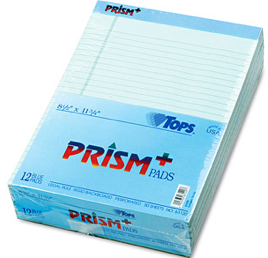
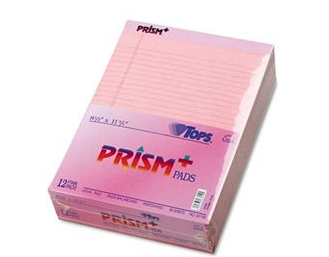
aren’t exactly conducive to Christmas planning (though they might work for Easter), and I’ve yet to see red and green holiday-themed legal pads, but a green legal pad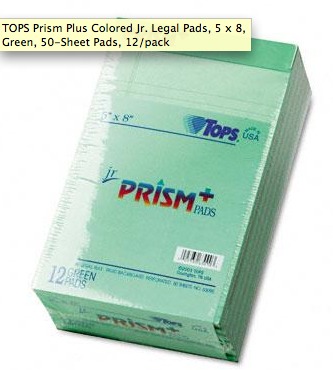 might help you stay festive. The big attractions of legal pads for project planning are ample writing space and perforations, but don’t tear the pages off until you’re ready to use or store them. It’s easier to keep track of a whole legal pad, flipped open to the right page (or marked with tape flags) than one oft-folded, wrinkled piece of paper.
might help you stay festive. The big attractions of legal pads for project planning are ample writing space and perforations, but don’t tear the pages off until you’re ready to use or store them. It’s easier to keep track of a whole legal pad, flipped open to the right page (or marked with tape flags) than one oft-folded, wrinkled piece of paper.
2) Three Ring Binder — If you’ve been reading Paper Doll for a while, you know how much I favor three ring binders for sorting and storing everything from recipes to driving directions. Pick from any of a variety of colors and sizes, though you’ll probably want to stick with  something in the 3/4″ to 2″ range. Simply use divider tabs to separate out the individual categories you want to use. Since most binders come with a plastic cover on the front and spine, you can label your holiday or project binder creatively and decorate (without glue or mess) with snippets of wrapping paper, family photographs or apropos comics pages tucked under the clear plastic.
something in the 3/4″ to 2″ range. Simply use divider tabs to separate out the individual categories you want to use. Since most binders come with a plastic cover on the front and spine, you can label your holiday or project binder creatively and decorate (without glue or mess) with snippets of wrapping paper, family photographs or apropos comics pages tucked under the clear plastic.
Need something even more festive? I learned this trick from watching how Professional Organizer and Daily Money Manager Nanette Duffey created a binder for her projects as our NAPO-Georgia chapter treasurer a few years back. Nanette runs a length of pretty grosgrain ribbon
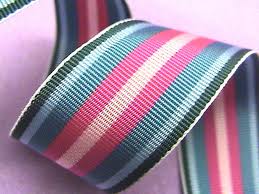
through the interior and around the exterior of the spine. Experiment — you can tie the ribbon in a fancy bow on the outer spine, or merely run it smoothly along the spine and glue the edges to the metal bar for the binder on the interior portion. Plan to recycle your binder? A little adhesive-backed Velcro will let you change ribbons as easily as you change shoes.
3) Project Organizer — Our friends at Smead make a nifty Project Organizer, which I’ve referenced previously. It’s a sturdy 2-ply tabbed accordion file, like the Tickler File sorters I love so much, in a good-for-all-seasons Navy/Lake Blue that signifies that serious work is contained therein. (In other words, nobody’s likely to toss out your project notes, disdaining them as “doodles”, when housed in the Project Organizer.)
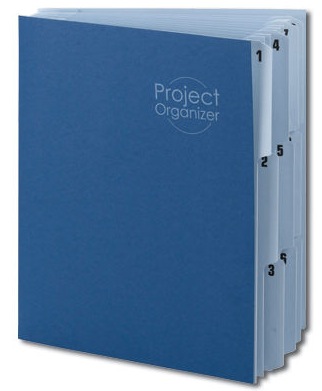
The binder measures 9 7/8 inches wide by 11 3/4 inches high, so it’s suitable for carrying in your briefcase, messenger bag or laptop case, or even pressed closely to your chest, guarded like a magic formula for holiday de-stressing. (Speaking of de-stressing, Smead’s Operation Organomics has jumped into the act with a nifty Holiday To Do List countdown and printable holiday calendar to help you stay afloat during the last hectic weeks of the holiday season.)
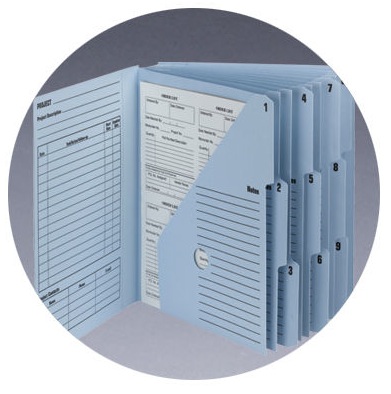
The Project Organizer has ten pockets to hold your receipts, recipes and lists. Each left-side page is pre-printed with project headers and has spaces for dates, actions and status updates; the right side, along the pocket area, provides space for notes to track important contact and other information.
So, what can you keep in your project planner?
A calendar — Keep track of all of your family, class or workplace events and to guard against conflicts.
Recipes — If you’ve followed my advice in the past about keeping favorite recipes in sheet projectors, you can just pluck the recipe pages you need and later return them to your binders (once you’ve wiped off the figgy pudding).
Receipts — How else can you tell if you’re on-budget (or return items that duplicate someone else’s efforts) unless you keep your receipts in one easily accessible location?
Lists — What’s a project without lists of what you have to plan, write, call, do, make and purchase? For example, during the holidays, you’ll want to make at least a few of the following lists, depending on your plans:
- Guest Lists
- Menu Planning Lists
- Decorating Lists
- Gift Shopping Lists (with associated wish lists, size lists and a place to attach coupons or discount codes)
- Grocery Shopping Lists
- Greeting Card Lists
- Address Change lists
- Activity Lists to prepare for all of the family/work events
And this is merely what just one little Jewish, child-free, non-entertaining, non-traveling professional organizer can think of for getting your holiday lists in gear. If you want to master the special effects of being the Spirit of Holiday Lists (Past, Present and Future), you’ll want to check out List Mama’s (Jennifer Tankersley’s) List PlanIt.
And of course, if you’re struggling with planning, organizing, shopping, gift-giving, and other holiday projects, please check out my ebook, Simplify the Season and Save Your Sanity, to help restore some of your sparkling fa-la-la-la-la.
Simplify the Season and Save Your Sanity, to help restore some of your sparkling fa-la-la-la-la.
Projects aren’t limited to the holidays, of course. In fact, just around the corner, starting New Year’s Day, people will roll out their resolutions and their project plans. Paper Doll, for example, is going to start keeping track of all of the books I read.
Between books I buy, borrow and trade (remember this series?), I do a lot of reading, but once it’s time to make a recommendation, if I haven’t blogged about a book or kept it on my shelf, I may not have all the essential information to pass along. And, though I’m a member of Good Reads, it’s no surprise that I’m a paper girl at heart and don’t always think to log in to Good Reads until I get a notice about one of my pals’ reading habits.
No more! Starting in 2011, I’m going to keep track of every book I read, just like singer Art Garfunkel, who has tracked every book he’s read since 1968, here, or novelist Nick Hornby, who tracks the books he’s bought and read in his Stuff I’ve Been Reading column in The Believer (and in his books The Polysyllabic Spree and Housekeeping vs. the Dirt).
What about your upcoming projects? Readers, please share your favorite (holiday or other) project tips…and let us know what projects you’ve got planned for the coming weeks and months.




Follow Me